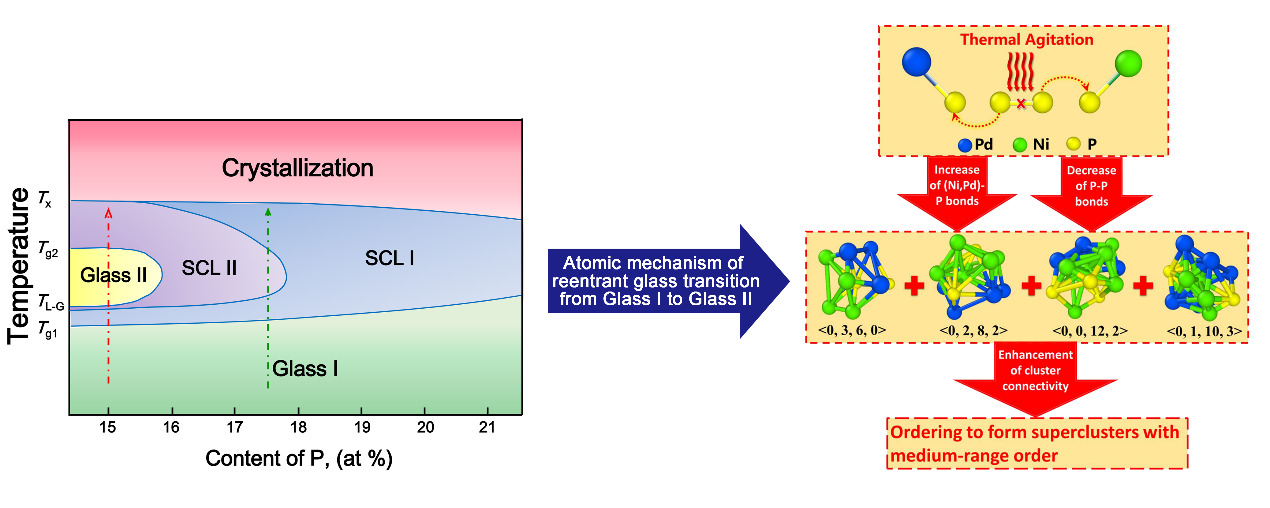Analogous to the well-known polymorphism in crystalline materials, polyamorphism in amorphous matters is also a ubiquitous yet important phenomenon in our daily lives, which is characterized by the coexistence of two different amorphous states in equilibrium. One typical example is the reentrant glass transition in which a repulsive glass changes into an attractive one with enhanced bonding, mediated by an intermediate liquid in between the two glass states. Such polyamorphic transition (PT) was usually observed in colloidal systems due to the entropy-driven depletion attraction, and has not been reported so far in metallic glasses (MGs) where enthalpies dominate the glass transition.
Recently, the group headed by Prof. Zhaoping Lu from the State Key Laboratory for Advanced Metals and Materials at University of Science and Technology Beijing, reports the first observation of a reentrant glass transition in Pd-Ni-P MGs. This unusual reentrant glass transition transforms an MG from its as-quenched state (Glass I) to an ultrastable state (Glass II), mediated by the supercooled liquid of Glass I. Specifically, upon heating to above its glass transition temperature under ambient pressure, Glass I first transforms into its supercooled liquid, which then transforms into a new Glass II, accompanied by an exothermic peak in calorimetric scan, together with a precipitous drop in volume, electrical resistance and specific heat, as well as clear evidence of local structural ordering on the short-to-medium-range scale revealed via in-situ synchrotron X-ray scattering. By atomistic simulations, they demonstrate that the atomistic mechanism for the reentrant glass transition is mainly realized by atomic rearrangements under thermal agitation. In contrast to the common PTs previously reported in MGs, the present reentrant glass transition is irreversible, which leads to a thermodynamically and kinetically ultrastable MG that can be easily retained for comprehensive investigation at ambient environment. This work not only offers new insights into the understanding of polyamorphic transitions in general, but also provides a new approach to developing novel glasses with desired properties by modulating their atomic structure ordering. It is believed that this work will spark activities to understand this new kind of reentrant glass transition both experimentally and theoretically.
This work has been published as a research article in the high-profile journal Materials Today. The first author of this research paper is Qing Du, a PhD candidate from the State Key Laboratory for Advanced Metals and Materials at University of Science and Technology Beijing. The corresponding authors are Prof. Xiongjun Liu and Prof. Zhaoping Lu. Researchers from Center for High Pressure Science & Technology Advanced Research, China Spallation Neutron Source, Argonne National Laboratory, University of Wisconsin-Madison and Johns Hopkins University were involved in this project and provided support. This research was supported by the National Natural Science Foundation of China, State Administration of Foreign Experts Affairs and 111 Project. (For more details please see the full paper at https://doi.org/10.1016/j.mattod.2019.09.002 )

Figure Phase transition process (red dotted line) and the corresponding atomic mechanism for the reentrant glass transition in the Pd-Ni-P metallic glass.